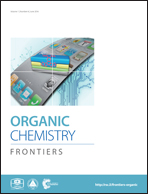Recent advances in C–H fluorination
Abstract
Incorporation of fluorine atom(s) into organic compounds is often desirable in the discovery of new pharmaceuticals, agrochemicals, and materials. However, development of transformations to incorporate fluorine is challenging because of its highly electronegative nature. Recent advances in C–H functionalization have allowed new approaches to C–F bonds. Herein we highlight progress in C–H fluorination, which is arguably the most efficient approach to incorporate fluorine since it obviates the need of pre-functionalization of organic compounds.

- This article is part of the themed collection: Reviews & Highlights in Organic Chemistry Frontiers for 2014

 Please wait while we load your content...
Please wait while we load your content...